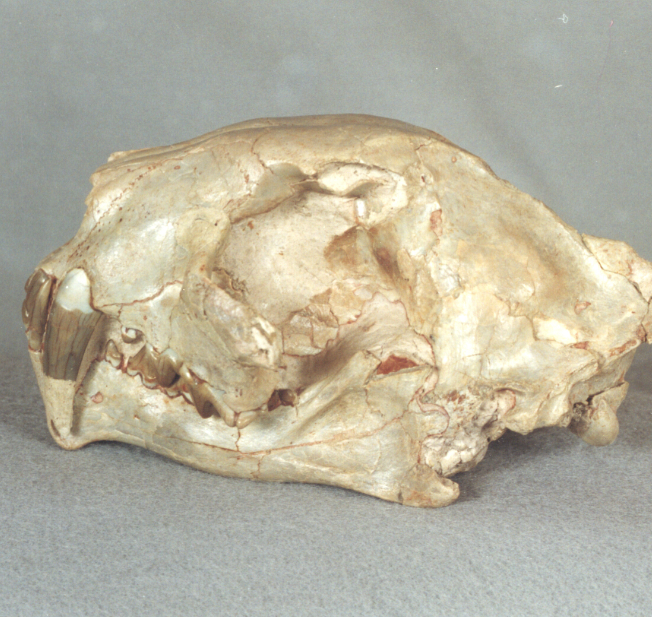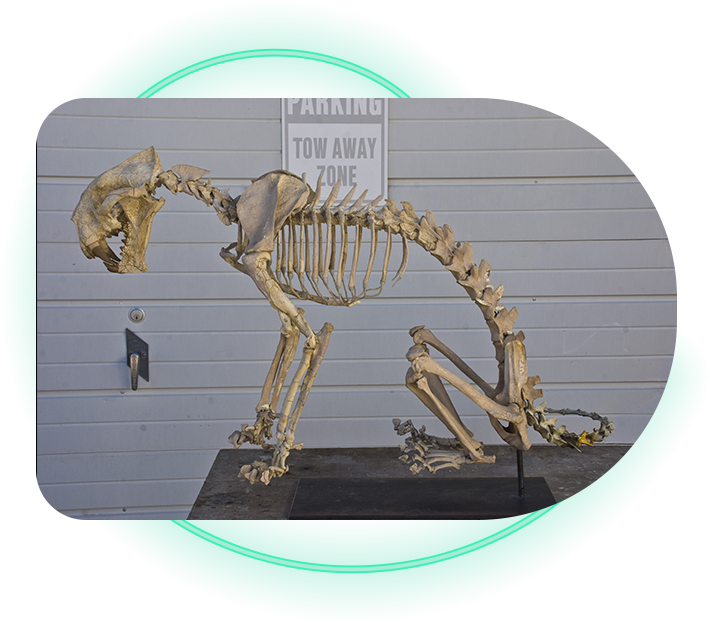Favorite CollLection Triceratops Real Figure Keyring
$11.95

The fossil vertebrates of the White River Badlands have now been collected, studied and displayed for more than one hundred years.
Mauvaises terres is what French trappers called this land. Sioux Indians also had a name for it – Mako Sica in the Lakota language. These terms both translate into ‘Badlands’, the name that is used today. The reason for the name is because this land was BAD to traverse. It was difficult to cross because it was broken or cut up by erosion into a series of tables,ridges, gullies, canyons and escarpments which made passage nearly impossible with the limited transportation technology of that time.
The Badlands are a topographical and geological feature that stretches across western South Dakota and across the border into western Nebraska. Badlands stringers and outliers are also exposed in North Dakota, Wyoming, Colorado and Montana, as well as elsewhere in South Dakota and Nebraska. This land is composed of eroded sediments which were deposited during the late Eocene and Oligocene Ages, 40 to 25 million years ago.

The landscape of the badlands topography is one of the natural wonders of this planet. We are fortunate in the United States to have recognized and preserved the best examples of the Badlands as part of the Badlands National Park in South Dakota. Fossil collecting is prohibited there except under special permit. There are, however, other exposures of the Badlands in which anyone may potentially collect fossils with permission of the landowners.These areas of private land have exposures which weather very quickly.
In the Badlands, fossil vertebrates are exposed and rapidly uncovered by rain, wind and frost. If they are not collected, they are destroyed. As long as proper collecting techniques are employed ( permission to collect obtained, specimens properly excavated and cast, locality and stratigraphic data recorded) scientists, professionals and amateurs will continue to enhance our knowledge of the past life in the White River Badlands. This knowledge will help us better understand the history of life on earth. It is important that collections of these fossils be preserved in museums throughout the world.
Fossils were first gathered here by early Native Americans who lived here before the more recent Sioux Indians and French trappers arrived. They were also collected and carried by the Sioux Indians for their ‘good medicine’. The first fossil specimen collected and studied for its scientific value was a fragment of a titanothere jaw described in the American Journal of Science by Dr. Hiram A. Prout. Prout’s paper was soon followed by Dr. Joseph Leidy’s description of a Poebrotherium skull – a prehistoric camel. These two papers sparked an interest in the Badlands and the fossil graveyard which was said to exist within its confines.
In the years immediately following, many early, well known collectors of vertebrate fossils came to inspect the Badlands. Dr. John Evans, collecting for the Geological Survey under David D.Owen, came in 1849. The first comprehensive geological observations and fossil mammal collections were made by Ferdinand V. Hayden in the 1850’s and ’60’s. Hayden’s frequent visits were observed carefully by the Sioux. They believed him to be insane and thus, holy, and gave him the name ‘man who picks up stones while running’. Dr. Joseph Leidy wrote extensive reports on the specimens that Hayden collected and published them in the 1869 volume titled, ‘The Extinct Mammalian Fauna of Dakota and Nebraska’. Hayden and Leidy’s collaboration led to the description of scores of newly identified species and stimulated the interest of later paleontologists.
Other fossil collectors soon came in search of specimens and new species. They included Othniel C. Marsh and Edward Drinker Cope as well as William B. Scott, John Bell Hatcher, E.H. Barbour,C.M. Sternberg, C.C. O’Harra, W.D. Matthew, A.E. Wood, J.D. Bump, C.B. Schultz and John Clark.Many new species of fossil mammals, birds, fishes, reptiles and amphibians were collected,studied and described. New species are still being discovered today in the Badlands.
The Black Hills Institute has an excellent selection of White River Badlands fossils including horses, saber-toothed cats and oreodonts. Many superb specimens have been molded and cast making beautiful in-situ and free mount displays.